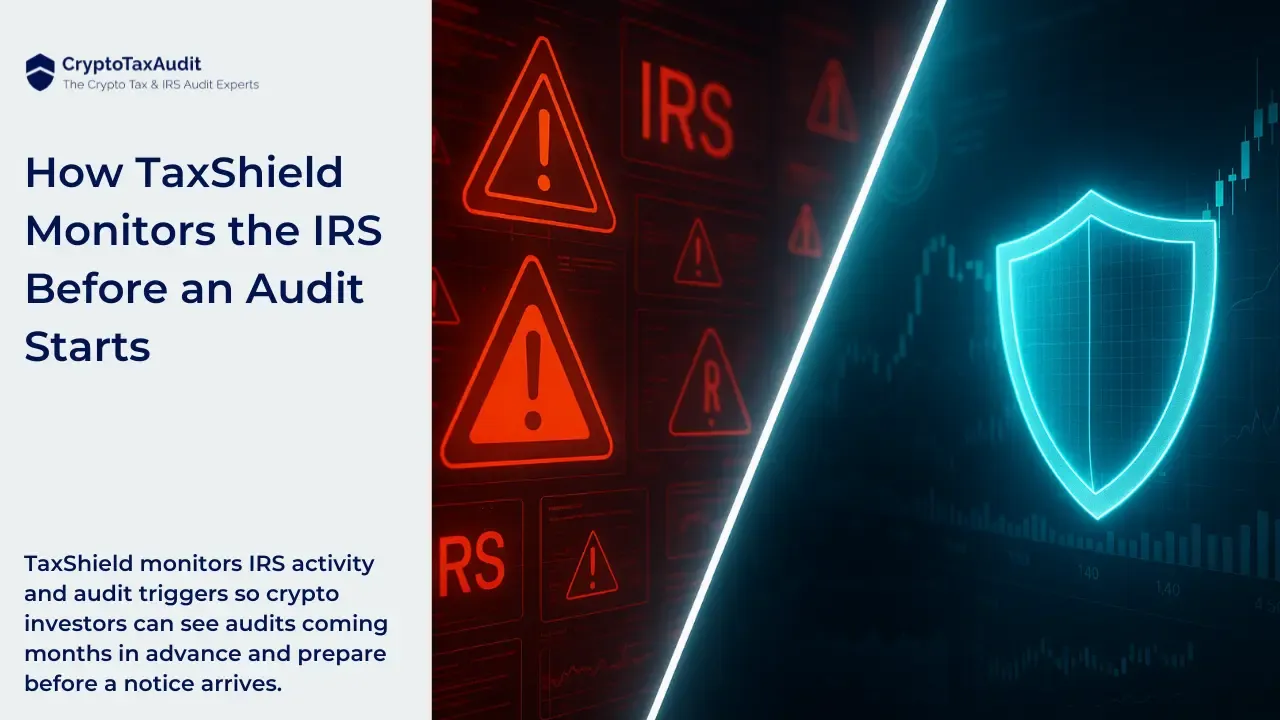
As of this publication, the Bitcoin halving is only 14 days away, where each block reward for successfully mining Bitcoin will be cut down to 3.125 BTC from the current 6.25 per block. This event is causing a lot of excitement within the industry and crypto investors alike as Bitcoin continues to become more scarce.
But why exactly is this such a big deal? How, if at all, will this impact your strategy to be compliant with tax authorities, such as the IRS? In this article, we will look at Bitcoin, how it works, and how the halving will affect its supply. We will also explain all tax considerations you must remember if you invest in or mine Bitcoin.
How Does Bitcoin Work
First, we must understand how Bitcoin works to understand why so many industry experts and investors are bullish about the halving. Built into the Bitcoin algorithm, there can never be more than 21 million BTC; this is the supply cap designed into Bitcoin from day one.
New Bitcoin are ‘created’ through a process known as mining. Mining is used by proof-of-work cryptocurrencies, such as Bitcoin, to secure the network and create new coins. Mining works by requiring miners to randomly keep generating nonces until one of them correctly solves the next block based on the target difficulty. A nonce, which stands for ‘number only used once’ is a number that is generated, then hashed and checked relative to the target difficulty. The nonce that will solve the next block reward is unknown to miners, and due to the hash algorithm used by the Bitcoin network, SHA-256, the only option for miners to solve this is by brute force, where the ASIC miners keep generating nonces and using the guess and check method. This process is very computationally heavy, and as the network grows and more miners get involved, the difficulty keeps increasing. This is why mining can use a significant amount of electricity, as it is a very resource-intensive process in which each miner competes with all other miners to solve the next block successfully.
Once a miner successfully solves the puzzle that mines the next block, this is transmitted to all other miners in the network, and since the nonce is known, they can all check whether this hash correctly solves the puzzle. If it does, all miners will accept this block as valid, and this hash will permanently become part of the Bitcoin blockchain.
As more miners join the network and the target difficulty increases, the hash rate needed by each miner to be competitive increases. This hash rate refers to how fast miners are able to run their guess and check calculations, which, in a competitive blockchain like Bitcoin, only those with the highest hash rates will be profitable. This process of requiring resources to solve the next block secures the network and ensures that miners act by the rules. As there is no central authority to regulate the mining process, miners are incentivized to do the right thing by requiring high amounts of resources (power) to solve the next block. If a miner tries to circumvent the rules, other miners will reject the block, and all energy invested into solving the puzzle will be wasted. This is why the Bitcoin network becomes more secure as it grows, as the more participants, the more hash rate needed, and the harder it is to hack the network.
What is the Bitcoin Halving
As we have already established, new Bitcoin are mined (created) every time a miner successfully solves the next block. Each block is mined approximately ten minutes apart, meaning new Bitcoin are issued every ten minutes.
The Bitcoin network launched in January 2009 with the Genesis Block, in which Satoshi Nakamoto mined the first 50 Bitcoin to exist. Since then, every new block has resulted in new Bitcoin being mined into circulation.
From the time of the network launch through 2012, each block reward resulted in 50 new Bitcoin being rewarded to whoever successfully mined the block. However, the Bitcoin supply is capped at 21 million, meaning there can never be more than that amount. This is achieved by cutting the number of block rewards by half every four years through a process known as Bitcoin halving.
At its most basic level, the halving slashes the amount of Bitcoin miners earn on each block in half. By cutting this amount in half every four years, very few new Bitcoin will eventually be issued for each block reward. As previously mentioned, the first blocks resulted in 50 new Bitcoin being rewarded to the successful miner, while current block rewards stand at 6.25 Bitcoin per block. The chart below shows the historical dates for each halving and amounts of Bitcoin rewards per block during each four-year period. As you can see, through the halving, new BTC issuance will keep being cut in half until each block's rewards are nearly 0, and miners will mostly make money through fees.
|
From |
To (Halving Date) |
BTC / Block |
|
Genesis Block, Jan. 2009 |
November 2012 |
50 BTC |
|
November 2012 |
July 2016 |
25 BTC |
|
July 2016 |
May 2020 |
12.5 BTC |
|
May 2020 |
April 2024 |
6.25 BTC |
|
April 2024 |
2028 |
3.125 BTC |
|
2028 |
2032 |
1.5625 BTC |
|
2032 |
2036 |
0.78125 BTC |
|
2036 |
2040 |
0.390625 BTC |
Bitcoin Scarcity
With blocks being mined approximately every ten minutes, about 144 blocks are produced daily, meaning that the current daily Bitcoin production is 900 Bitcoin per day. With the upcoming halving, daily Bitcoin issuance will be cut to 450 Bitcoin per day. According to data from Coinglass, the Bitcoin ETFs are currently purchasing an average of 4,105 BTC each trading day, and if we remove the outflows from Grayscale Bitcoin Trust, the other ETFs are responsible for purchasing 9,494 BTC per day. At a time when the daily issuance of BTC is about to be cut in half to 450 per day, market speculators believe this could lead to a massive supply squeeze.
Considering the dates for each Bitcoin halving and institutions such as Blackrock, Fidelity, and Microstrategy buying so much Bitcoin, if the Bitcoin network continues to grow at the current rate, the price will have to increase to satisfy the demand. We also need to consider the amount of Bitcoin that has been lost and will never be able to be recovered. Depending on the source, this number can range from 4 to 6 million Bitcoin that have been lost, taking the supply cap from 21 million to 15 to 17 million.
Furthermore, as we have previously established, the more participants in the network, the more secure the network becomes. With institutions and nation-states entering the market, this, combined with the supply cap, is what makes Bitcoin such a hard asset. In times when the US debt is over $34 trillion (not including $214 trillion in unfunded liabilities) and global debt has passed $313 trillion, according to Reuters, it is no wonder so many are turning to Bitcoin as a store of value away from fiat currencies.
Bitcoin Taxes
Remember, while the rising price of Bitcoin can lead to life-changing wealth, reporting and paying your taxes is critical. While tax enforcement may vary by country, Western tax authorities such as the IRS (USA), HMRC (UK), and ATO (Australia) have made it very clear that any profits from Bitcoin investments are taxable. In the United States, the IRS believes up to 75% of crypto holders are non-compliant. While many Bitcoin investors may think their gains should not be taxed or believe that the IRS has no visibility into their crypto investments, this could not be further from the truth. Noncompliance can result in significant penalties, interest, and criminal charges that can lead to six-figure fines and even jail time. Furthermore, if the IRS can prove fraud, then there is no statute of limitations, meaning that intentionally omitting reporting your Bitcoin gains could leave you at risk for years to come.
This is especially important for Bitcoin investors to remember, given that the IRS received $80 billion in funding from the Inflation Reduction Act. This is due to a growing tax gap that the IRS is fighting to reduce. When you consider the significant amount of resources invested, along with industry experts that the IRS has hired to help close the tax gap, particularly with crypto investors, it is even more critical for any Bitcoin investor to report and pay taxes on their gains.
Remember, buying Bitcoin with USD is not taxable, nor is HODLing your Bitcoin. However, should you choose to sell, exchange, or use your appreciated Bitcoin as a form of payment, you will have to report your gain and pay taxes on this gain. This is true even if you exchange your Bitcoin for another cryptocurrency, even if you do so using a decentralized exchange. Yes, trading your Bitcoin for Ethereum, Solana, or USDT is taxable. Your gains are calculated based on:
Taxable Gain (or Loss) = Proceeds - Cost Basis
Proceeds = Amount in USD you received for your crypto. If you exchanged your crypto for another asset or used it to pay for a good or service, this is the asset's fair market value at the time of the trade.
Cost Basis = Cost to acquire your crypto, including any acquisition fees.
This principle of recognizing taxable gains (or losses) every time you sell, trade, or use Bitcoin to buy goods or services holds true regardless of which crypto asset you are trading. You must report that taxable gain or loss every time you sell, trade, exchange, or use any cryptocurrency. Even gains from USDT are taxable, even if the gain or loss is negligible. For those who only buy Bitcoin, this may seem simple to keep track of, especially if you don’t have too many purchases. However, calculating your taxable gains becomes a herculean task for those who choose to dollar-cost-average into Bitcoin (or any other coin) or those who get leered by other crypto assets and buy, sell, and exchange several coins. The transaction volume, multiple exchanges, wallets involved, pricing of the assets, and other taxable events such as airdrops or staking create complexities that make using a crypto tax software tool a necessity.
At CryptoTaxAudit, we use some of these tools as part of our arsenal. While these tools are powerful and can help, high volume, missing data, and complex tax transactions can lead to taxpayers acting as their own accountants. As such, we strongly recommend you schedule a consultation with our crypto tax team if your investments are significant or if you are a high-volume trader. The difference is that without professional help, you might be significantly overpaying your taxes if you only rely on these tools. If you rely on our professional team, we will ensure you pay no more than what you legally should, helping you keep the most of your after-tax gains so you can continue to invest in such an exciting time for the crypto industry.
Bitcoin Mining Taxes
Now that we have covered how Bitcoin gains are taxed let’s talk about how Bitcoin mining is taxed. Yes, each time a miner successfully solves a block and receives Bitcoin, it is considered a taxable event.
According to IRS Notice 2014-21, when a taxpayer successfully mines cryptocurrency, the fair market value at receipt is considered gross income. This income must be reported on tax returns.
https://www.irs.gov/irb/2014-16_IRB#NOT-2014-21
Business Mining
Due to the hash rate requirements in the Bitcoin network, most miners are established businesses, and an individual would need significant resources to compete with other miners. The most efficient way for many to participate in the Bitcoin mining industry today is to acquire shares in one of the many publicly traded Bitcoin mining corporations. Doing so would result in taxation no different from how any other stockholders are taxed - as short or long-term capital gains upon disposition of the stock, depending on the holding period.
For anyone who does happen to be running a smaller-scale mining operation, whether Bitcoin mining or any other Proof-of-Work cryptocurrency, if the mining operation rises to the level of a trade or business, then:
- You must report the taxable income (or loss) on the appropriate business tax return.
- Any mining rewards would be treated as your gross income (revenue) based on the fair market value of the mined coins at the time you successfully mined each block.
- You would be entitled to deduct any ordinary and necessary business expenses, such as electricity, payroll, insurance, rent, supplies, and other business expenses. In addition, any mining rigs would have to be capitalized and depreciated over time (although you could elect for bonus depreciation or section 179 to accelerate the cost-recovery deductions).
- Any income from a trade or business would be subject to self-employment taxes unless it is through an S corporation or C corporation. However, this carries other considerations, such as paying officers reasonable compensation subject to FICA payroll taxes.
Whether mining is a business or a hobby is based on factors such as regularity, continuity, and profit motive. Due to the many complexities that can arise with the taxation of Bitcoin mining, including business tax issues, we encourage you to schedule a consultation with our professionals.
As the Bitcoin halving of 2024 approaches, the event presents a significant chapter in the ongoing narrative of this pioneering cryptocurrency. This halving not only highlights Bitcoin's designed scarcity but also brings to light critical considerations for investors and miners, particularly in terms of taxation and compliance. The halving's effect on the supply and potential market dynamics offers an intriguing outlook for both long-term holders and new entrants in the market, reiterating the unique attributes of Bitcoin in the digital asset space.
Hobby Mining
So, if you don’t qualify to be a business miner, then what are your options? For anyone who is not mining as a trade or business, you are considered a hobby miner. This means that you have to report your income as ‘other income’ on Schedule 1.
The IRS explains in the instructions to Schedule C that “An activity qualifies as a business if your primary purpose for engaging in the activity is for income or profit and you are involved in the activity with continuity and regularity. For example, a sporadic activity, not-for-profit activity, or a hobby does not qualify as a business.” In order for an activity to qualify as a business, you must show that you are engaging in that activity continuously with an intent to make profit and income.
Unfortunately there is no bright-line test to determine this as there is no formal definition of “trade or business” in the Internal Revenue Code, which has led to much confusion and litigation over the years. The best advice is that if you say you are in a business, you should actually be in the business - working regularly, in a for-profit activity and treating it like a business - this means an LLC, accounting records and such. If you are paying a fee, not doing anything else and only collecting rewards, this is not likely to be seen by the courts as a business activity, but either a passive activity or an investment activity.
Conclusion
The Bitcoin halving is a huge event for Bitcoin, miners, the cryptocurrency industry, and all crypto investors. Due to the economics that cutting the supply in half has in the market, the price of Bitcoin tends to appreciate following each halving; this results in every other cryptocurrency appreciating along with Bitcoin as funds flow from appreciated Bitcoin positions into other coins.
Because of this, it is critical that crypto investors and miners stay up to date on the tax implications of trading, selling, and mining cryptocurrency. As we’ve mentioned in the article, the IRS is enhancing its focus on crypto transactions, and understanding and adhering to tax laws becomes paramount if taxpayers want to protect their gains from steep penalties and penalties.
As we edge closer to this pivotal event in Bitcoin's timeline, it presents a compelling moment for individuals and entities involved in cryptocurrency to refine their strategies. This involves balancing investment goals with a clear understanding of the regulatory framework, ensuring that one's approach to Bitcoin, whether holding, trading, or mining, is informed and compliant. The upcoming halving thus stands as a testament to Bitcoin's growing maturity as an asset class and its intertwined relationship with the broader financial and regulatory environment.





